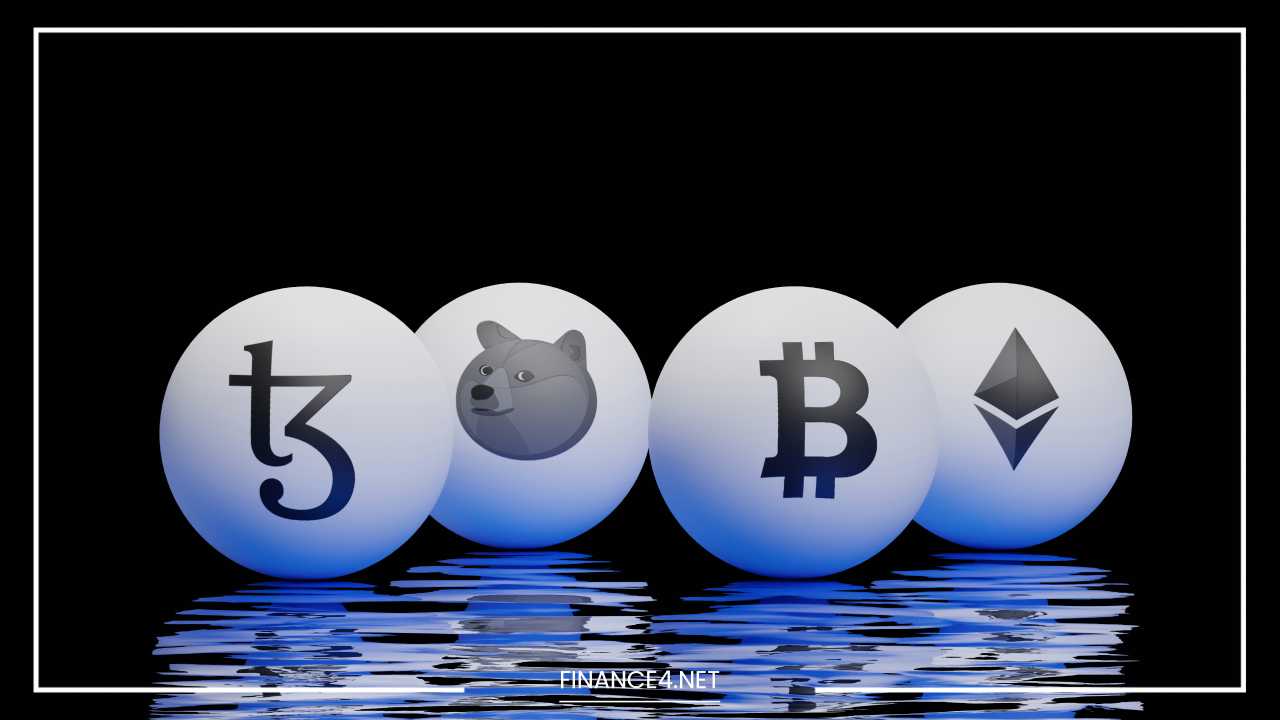Crypto Tokens vs. Cryptocurrencies vs. Crypto Commodities: What’s the Difference?

Crypto Tokens vs. Cryptocurrencies vs. Crypto Commodities
Crypto Tokens vs. Cryptocurrencies vs. Crypto Commodities: A Comprehensive Guide
The realm of cryptocurrency is extensive and can be perplexing, especially for those new to the field. With terms like tokens, cryptocurrencies, and crypto commodities frequently used, it’s easy to become disoriented.
This article seeks to clarify these concepts, explore their key differences, provide illustrative examples, and delve into the nuances that distinguish them.
Cryptocurrencies: The Cornerstones of the Crypto Ecosystem
Cryptocurrencies are often considered the foundational elements of the crypto universe. They are digital or virtual assets that utilize cryptography for secure transactions and are typically built on decentralized networks.
Unlike traditional currencies, which are controlled by central authorities, cryptocurrencies operate on a distributed ledger technology known as blockchain, which ensures transparency and reduces the risk of manipulation.
Key Characteristics of Cryptocurrencies:
- Decentralization: Cryptocurrencies are managed by a network of computers (nodes) rather than a central authority. This decentralized nature ensures that no single entity has control over the currency, which enhances its resistance to censorship and fraud.
- Cryptography: The security and integrity of transactions are maintained through cryptographic techniques. This includes public and private keys that allow users to send and receive funds securely.
- Peer-to-Peer Transactions: Transactions occur directly between users without intermediaries. This not only speeds up transactions but also reduces fees associated with traditional banking systems.
- Limited Supply: Many cryptocurrencies have a capped supply. For example, Bitcoin has a maximum supply of 21 million coins. This scarcity is akin to precious metals and can contribute to their value.
- Intrinsic Value: The value of cryptocurrencies is often tied to their underlying technology, network effects, and potential use cases. Despite market volatility, their technological foundation gives them intrinsic value.
Examples of Cryptocurrencies:
- Bitcoin (BTC): The first and most well-known cryptocurrency, often referred to as digital gold. It was designed as a decentralized digital currency and has become a store of value.
- Ethereum (ETH): Known for its smart contract functionality, Ethereum supports a wide range of decentralized applications (DApps) and tokens.
- Litecoin (LTC): Created as a “lighter” version of Bitcoin, Litecoin offers faster transaction times and a different hashing algorithm.
- Ripple (XRP): Focuses on facilitating cross-border payments and aims to provide liquidity for financial institutions.
Crypto Tokens: Building Blocks of the Blockchain
Crypto tokens are digital assets that reside on an existing blockchain. Unlike cryptocurrencies, which often function as independent digital currencies, tokens are created on top of existing blockchain platforms and represent a variety of assets or rights within a particular ecosystem.
Key Characteristics of Crypto Tokens:
- Exist on a Blockchain: Crypto tokens are typically built on a blockchain platform that supports token creation, such as Ethereum, Binance Smart Chain, or Solana. These tokens leverage the underlying blockchain’s infrastructure for security and transaction processing.
- Represent Specific Assets or Services: Tokens can represent a wide range of assets, including real estate, company shares, or even voting rights within a decentralized organization.
- Utility Value: The primary function of many tokens is to provide access or benefits within a specific network. For instance, some tokens can be used to pay for transaction fees, access services, or participate in governance.
- Derivative Value: The value of a token is often tied to the underlying asset or service it represents. For example, a token that represents a share in a company will derive its value from the company’s performance and stock price.
Examples of Crypto Tokens:
- ERC-20 Tokens: These are a standard type of token created on the Ethereum blockchain, used for a variety of applications. Examples include Chainlink (LINK) and Uniswap (UNI).
- Binance Coin (BNB): Initially launched as a utility token for the Binance cryptocurrency exchange, BNB now supports various functions within the Binance ecosystem.
- Tether (USDT): A stablecoin pegged to the value of the US dollar, Tether provides a stable medium of exchange and is commonly used to trade other cryptocurrencies.
Crypto Commodities: Bridging Traditional and Digital Assets
Crypto commodities are a newer category of digital assets designed to represent traditional physical commodities such as gold, oil, or real estate. These assets aim to offer investors exposure to tangible assets without the associated physical risks and costs.
Key Characteristics of Crypto Commodities:
- Represent Physical Commodities: Crypto commodities are backed by underlying physical assets. For example, a gold-backed token is supported by a reserve of physical gold.
- Price Tracking: The value of a crypto commodity is linked to the price of the physical commodity it represents. This linkage provides a mechanism to trade commodities on a blockchain platform without needing to handle the physical asset.
- Reduced Physical Risks: By representing physical commodities digitally, investors can avoid issues related to storage, transportation, and security. This makes it easier to trade and invest in physical assets.
- Derivative Value: Like tokens, the value of crypto commodities is derived from the underlying physical asset. Their market price reflects changes in the value of the physical commodity.
Examples of Crypto Commodities:
- Gold-Backed Tokens: Tokens such as Paxos Gold (PAXG) and Tether Gold (XAUT) are backed by physical gold, providing a digital alternative for investors looking to gain exposure to gold without dealing with the logistics of physical storage.
- Oil-Linked Tokens: These tokens are tied to the price of crude oil, offering a way to invest in oil without the need to manage physical barrels.
- Real Estate-Backed Tokens: These tokens represent shares in real estate investments, allowing investors to own a fraction of property or real estate projects.
Key Differences Summarized
| Feature | Cryptocurrency | Crypto Token | Crypto Commodity |
|---|---|---|---|
| Decentralization | High | Dependent on the platform | Can vary |
| Purpose | Digital currency | Represent assets or services | Represent physical commodities |
| Value | Based on market demand and utility | Based on underlying asset or service | Linked to the price of the physical commodity |
| Examples | Bitcoin, Ethereum, Litecoin | ERC-20 tokens, BNB, USDT | Gold-backed tokens, oil-linked tokens |
The Interconnectedness of Crypto Assets
Understanding cryptocurrencies, crypto tokens, and crypto commodities as distinct categories helps in grasping their individual functions and purposes. However, it’s important to recognize that these categories are not isolated. They often intersect and interact in various ways:
- Tokens on Cryptocurrencies: Many cryptocurrencies, such as Ethereum, have their own tokens that serve specific functions within their ecosystems. For example, Ethereum’s ERC-20 tokens are widely used in DeFi (Decentralized Finance) and other applications.
- Crypto Commodities on Blockchains: Some crypto commodities are built on top of blockchain platforms like Ethereum. These tokens leverage the existing blockchain infrastructure to provide exposure to traditional physical assets.
- Cross-Functionality: Cryptocurrencies, tokens, and commodities can often interact. For instance, a token representing a physical commodity might be traded using a cryptocurrency, or a utility token may be used to access a commodity-backed asset.
The Role of Smart Contracts in Crypto Assets
Smart contracts are self-executing contracts with the terms of the agreement written directly into code. These digital agreements are integral to many crypto assets, as they automate processes and enforce conditions without the need for intermediaries.
Smart Contracts and Crypto Tokens:
- Automation: Smart contracts automate transactions and token transfers based on predefined rules. For example, if a token is used for access rights, a smart contract can automatically grant or revoke access based on token ownership.
- Transparency: The code of smart contracts is visible and immutable, ensuring that the terms are clear and cannot be altered once deployed. This enhances trust and reduces the risk of disputes.
- Efficiency: By eliminating intermediaries and automating processes, smart contracts reduce transaction costs and speed up execution.
Smart Contracts and Crypto Commodities:
- Verification: Smart contracts can verify and track the backing of crypto commodities. For instance, they can ensure that a gold-backed token is supported by the appropriate amount of physical gold.
- Compliance: Smart contracts can enforce compliance with regulations and standards related to the physical assets they represent, such as maintaining proper reserves.
Regulatory Considerations
The regulatory landscape for crypto assets is continually evolving, as governments and regulatory bodies worldwide grapple with how to classify and regulate these new digital assets.
The classification of a crypto asset as a currency, security, or commodity has significant implications for its regulation and oversight.
Classification Challenges:
- Cryptocurrencies: Often considered digital currencies, cryptocurrencies may face regulatory scrutiny related to monetary policy, anti-money laundering (AML), and counter-terrorism financing (CTF) regulations.
- Crypto Tokens: Depending on their function, tokens may be classified as securities, utility tokens, or other types of financial instruments. This classification affects their regulatory treatment and compliance requirements.
- Crypto Commodities: Crypto commodities, being tied to physical assets, may be subject to commodity trading regulations and oversight by agencies responsible for traditional commodities.
Regulatory Trends:
- Increased Clarity: As the industry matures, regulatory frameworks are becoming more defined. This clarity helps investors and companies navigate the legal landscape.
- Global Variation: Regulatory approaches vary by country. While some regions are fostering innovation with supportive policies, others impose stringent restrictions to mitigate risks.
- Adaptation: : Regulators are increasingly adapting to the rapid developments in the crypto space by refining existing frameworks and developing new regulations to address emerging challenges, ensuring that legal structures can effectively manage the complexities and risks associated with digital assets while fostering innovation.
The Future of Crypto Assets
The world of crypto assets is dynamic and rapidly evolving. As technological advancements continue to push the boundaries of what is possible and as regulatory frameworks become more refined, the landscape for cryptocurrencies, crypto tokens, and crypto commodities will transform.
Here’s a closer look at some key factors shaping the future of crypto assets:
Technological Advancements
- Blockchain Innovations: Emerging blockchain technologies, such as sharding, layer 2 solutions, and interoperability protocols, are set to enhance the scalability and efficiency of crypto networks. These advancements could lead to faster transaction speeds, lower costs, and greater usability for both cryptocurrencies and tokens.
- Decentralized Finance (DeFi): DeFi has revolutionized the financial sector by offering decentralized alternatives to traditional financial services. DeFi platforms leverage smart contracts and blockchain technology to provide services like lending, borrowing, and trading. The growth of DeFi could drive increased use and innovation in crypto tokens, expanding their functionality and utility.
- Non-Fungible Tokens (NFTs): NFTs, which represent unique digital assets or collectibles, have gained significant traction. While they are often associated with digital art and media, their underlying technology could extend to other areas such as tokenizing real estate or intellectual property. This expansion could influence how we perceive and utilize various types of tokens.
- Central Bank Digital Currencies (CBDCs): Several countries are exploring or developing CBDCs, which are digital versions of national currencies issued by central banks. CBDCs could integrate features from cryptocurrencies, such as secure digital transactions and transparency, potentially influencing the future landscape of digital money.
Regulatory Clarity
- Harmonized Regulations: As more jurisdictions develop and implement regulatory frameworks for crypto assets, the goal is to achieve greater harmonization. Clear and consistent regulations can provide a stable environment for innovation and investment, helping to reduce uncertainty and foster growth.
- Consumer Protection: Regulatory bodies are increasingly focused on protecting consumers from fraud and misuse in the crypto space. This includes establishing standards for security, transparency, and disclosures, which can build trust and encourage wider adoption of crypto assets.
- Taxation and Compliance: Governments are developing frameworks for the taxation and compliance of crypto transactions. Clear guidelines on tax treatment and reporting requirements can help individuals and businesses navigate their obligations and avoid potential legal issues.
- Global Cooperation: As crypto assets operate on a global scale, international cooperation among regulators can help address cross-border challenges and ensure that regulatory standards are effectively enforced.
Adoption and Use Cases
- Increased Institutional Adoption: Institutional investors and financial institutions are increasingly entering the crypto space, driven by growing acceptance and potential for high returns. Their involvement can lead to more sophisticated financial products and greater legitimacy for cryptocurrencies, tokens, and commodities.
- Mainstream Integration: As crypto assets become more integrated into everyday applications, such as payments, savings, and investments, their adoption will likely increase. Innovations like crypto payment cards and integration with existing financial services could enhance their usability and appeal.
- Enterprise Use Cases: Businesses across various industries are exploring how blockchain and crypto assets can improve their operations. Use cases include supply chain management, digital identity verification, and decentralized marketplaces. The expansion of these applications could drive further demand for crypto assets.
- Tokenization of Assets: The tokenization of real-world assets, such as real estate, art, and commodities, has the potential to unlock new investment opportunities and markets. By representing these assets digitally, tokenization can enhance liquidity, transparency, and accessibility.
Final Thoughts
Navigating the complex world of crypto assets requires a solid understanding of the different categories and their unique characteristics.
Cryptocurrencies, crypto tokens, and crypto commodities each play distinct roles in the digital economy, and recognizing their differences is crucial for making informed decisions.
As the technology and regulatory environment continue to evolve, the landscape of crypto assets will undoubtedly expand and adapt.
Staying informed about the latest developments, understanding emerging trends, and considering the implications of technological advancements and regulatory changes will be essential for anyone looking to engage with the world of digital assets.
By grasping the nuances between cryptocurrencies, crypto tokens, and crypto commodities, individuals and businesses can better navigate this dynamic and rapidly changing field.
Whether you are an investor, a developer, or simply a curious observer, understanding these distinctions will enhance your ability to make informed choices and seize opportunities in the world of crypto assets.



